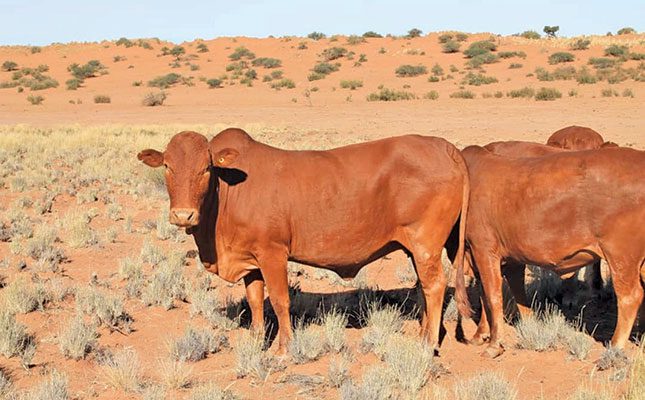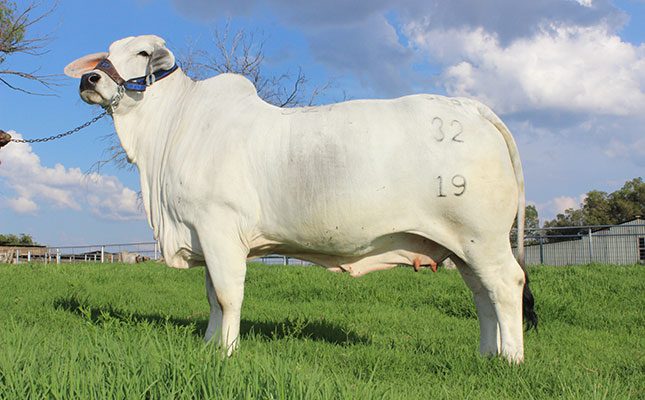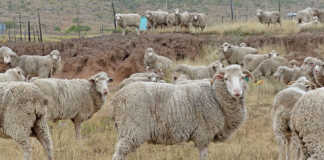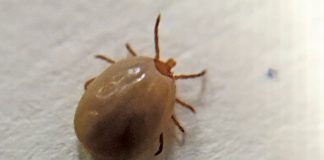
Photo: FW Archive
When choosing a beef cattle breed for your farm, you need to consider various factors. No two breeds are the same, and some are more efficient producers in particular circumstances and environments than others.
As such, you need to take your farming environment and production goals in mind when choosing a breed for your farm.
READ Why the ‘right’ breed can earn you more money
For this article, we have assumed that the reader wants to focus specifically on beef production.
If this is indeed your production call, it is recommended that you choose a breed that has been specifically bred for beef production.
(This is not to rule out dual-purpose breeds like the Simmentaler. However, for this article, we have focused exclusively on beef breeds.)
Beef breeds emphasise muscle development and efficient conversion of feed to meat.
Choosing a breed
As mentioned above, when choosing a beef breed, consider the climate and environment.
Choose a breed that is well suited to your production area, and bear in mind that some breeds may be better adapted to hot or cold climates, high altitudes or specific forage types.
Also consider the mature adult size of a breed, as this will have an impact on feed requirements, space and overall management.
A smaller breed, for example, may be more suitable for smaller farms. However, if you have a big farm, it’s not always best to choose a larger-framed animal, as these animals may have higher feed requirements, for instance.
In that regard, consider feed efficiency. Most registered breeders’ societies should have this kind of information available should you enquire about it.
Some breeds are better known for their ability to efficiently convert forages into meat, while others may have a higher tolerance for grain-based diets.
As such, you need to consider what you can afford in terms of feed, and what feed/pasture resources are available on your land. Consider the available feed resources on your farm.
Also keep in mind reproductive traits.
If you plan to run your cattle extensively, you need to ensure that you invest in an animal that is generally known for ease of calving, for example, as it may be difficult for you to be present at each birth.
READ Boost profit by using available genetic resources
In this regard, mothering ability is also important; animals that walk long distances and away from the homestead should display good protection and care for their calves.
Remember that efficient reproduction is crucial for a profitable operation!
You also need to consider a breed’s resistance or susceptibility to common diseases in your particular farming region.
Selecting breeds with natural resistance can reduce the need for veterinary interventions.
Ultimately, you need to consider specific genetic traits that align with your goals, such as growth rate, feed efficiency, and carcass quality, before selecting a breed.
Of course, the availability of breeding stock and initial start-up costs should also be considered.
You need to decide if it is better to invest in a ‘good enough’ breed for your farm, or perhaps spend a lot more money to invest in the ‘best’ breed for your farm.
Of course, this may not always be the case, but it very well may be, and so you need to consider all these factors before deciding to invest in a particular breed.
World’s most popular beef breeds
Angus
Origin: Scotland
Average mature weight: 840kg to 1 045kg (bull) and 520kg to 565kg (cow)
Average birthweight: 35,1kg
The Angus is red or black in colour, and is known for its well-marbled meat and exceptional maternal instincts.
The breed is also known for its adaptability. Angus cattle are good milk producers, have high fertility, are fairly low maintenance and have functional udders with small teats. The breed also thrives on most types of forage.
Angus cattle are particularly popular in the US, Canada, Argentina, Australia and New Zealand. In South Africa, it’s well represented in the Free State, KwaZulu-Natal and the Western Cape.
Visit angus.org.za.
Hereford
Origin: England
Average mature weight: 800kg to 850kg (bull) and 520kg to 540kg (cow)
Average birthweight: 38,2kg
The Hereford has a red body with a white face, and is known for its good meat quality, adaptability to diverse environments, and calm temperament.
The breed is also known for its high fertility, ease of calving and hybrid vigour. The Hereford also has exceptional foraging ability, and can thus be run in more extensive operations.
Visit hereford.co.za.
Charolais
Origin: France
Average mature weight: 900kg to 1 200kg (bull) and 640kg (cow)
Average birthweight: 48kg
The Charolais has a white or cream-coloured and large frame. The breed has excellent growth rates, and produces high-quality meat.
Charolais cattle are often used for crossbreeding purposes. The Charolais shows exceptional daily live weight gains, excellent conformation and muscling.
The breed has a quiet temperament and produces a consistent, lean carcass. The breed is also highly adaptable.
Visit charolais.co.za.
Limousin
Origin: France
Average mature weight: 1 000kg to 1 300kg (bull) and 650kg to 850kg (cow)
Average birthweight: 36kg
The Limousin is light to dark red in colour and has a muscular build. The breed shows efficient feed conversion, and produces high-quality lean meat.
It is known for its carcass yield. The breed is extremely fertile and has good conformation. The breed is known to thrive on all kinds of feed, from grain to grass.
Visit limousinsa.co.za.
Beefmaster
Origin: United States
Average mature weight: 1 200kg (bull) and 800kg (cow)
Average birthweight: 36kg
The Beefmaster can exhibit a range of colours, including red, black, or a blend of both. The breed standard accepts a variety of coat colours, allowing for individual variation.
Beefmasters are known for their feed efficiency, and their ability to thrive in different environmental conditions.
They show good heat tolerance, making them ideal for hot and humid conditions. The breed also exhibits strong maternal instincts and high fertility.
Visit beefmastersa.co.za.
Brahman
Origin: United States (developed from Indian breeds)
Average mature weight: 800kg to 1 100kg (bull) and 500kg to 700kg (cow)
Average birthweight: 27kg to 30kg

The Brahman is grey or red in colour, and has a characteristic hump on its back. The breed is particularly well known for its adaptability to tropical climates, but it is farmed under all kinds of conditions and temperatures across the world.
The breed is known for its heat resistance and insect tolerance. The Brahman is hardy and has low maintenance requirements.
Visit brahman.co.za.
South Africa is home to several indigenous beef cattle breeds that are well-adapted to the country’s diverse climates and environmental conditions. These breeds have evolved over time to thrive in the local landscapes.
Some South African beef breeds
Afrikaner
Average mature weight: 745kg to 955kg (bull) and 525kg to 640kg (cow)
Average birthweight: 33kg
The Afrikaner has a red or light-brown coat, medium to large frame, and horns that sweep backward.
READ The Afrikaner: equipped to beat climate change
Afrikaner cattle are known for their hardiness and adaptability to arid and semi-arid regions.
It is also known for its longevity, maternal instincts and high fertility. The Afrikaner is particularly well adapted to harsh conditions, and has good walking ability and tick resistance.
The breed is also known for its calm temperament.
Visit afrikanerbees.com.
Bonsmara
Average mature weight: 800kg (bull) and 500kg to 550kg (cow)
Average birthweight: 36kg
The Bonsmara has a reddish-brown coat, a medium to large frame, good meat quality, and shows good adaptability to various environments.
The Bonsmara has exceptional maternal instincts, high fertility and high adaptability. It thrives in all kinds of harsh conditions, and is highly feed efficient.
Visit bonsmara.co.za.
Boran
Origin: Southern Africa
Average mature weight: 650kg to 850kg (bull) and 350kg to 500kg (cow)
Average birthweight: 26kg
The Boran has a red or brown coat, a medium to large frame, and is well-adapted to hot climates.
Boran cattle are known for their heat tolerance, resistance to ticks, and good beef quality.
Visit boran.org.za.
Information sourced from respective cattle breeders’ societies. Please note that mature and birthweights are averages, and may vary across regions and conditions












